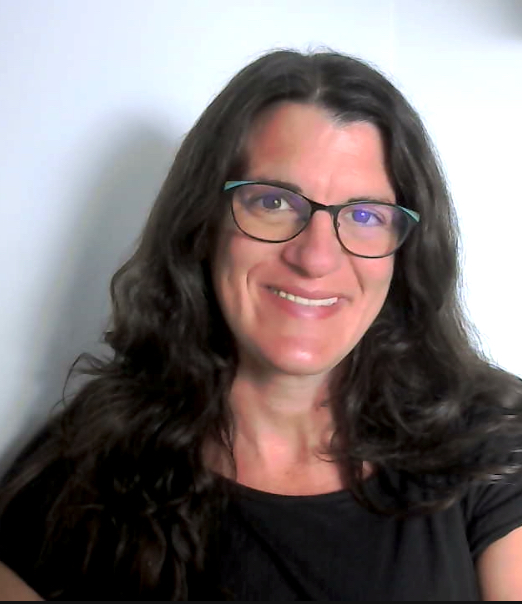Tissue Engineering
Tissue Engineering - Poster Session A & B
Y16 - A mechanically heterogeneous in vitro model to evaluate dermal fibroblast behavior during wound healing
Thursday, October 9, 2025
10:00 AM - 11:00 AM PDT
Location: Exhibit Hall F, G & H
- DM
Dalton Miles
University of Colorado Boulder, United States

Sarah Calve
University of Colorado Boulder
Boulder, Colorado, United States
Presenting Author(s)
Primary Investigator(s)
Introduction: : Dermal wounds that result from burns and many surgical interventions lead to both physical and psychological burdens for patients worldwide. During dermal wound healing, activated fibroblasts infiltrate and remodel the provisional fibrin matrix that initially fills the wound into a more permanent collagen-based matrix. However, if the injury is too severe, the cells and extracellular matrix (ECM) in the scar tissue are organizationally and compositionally distinct from intact skin, resulting in scar tissue that is mechanically inferior to its surroundings. The mechanical and biochemical factors that determine whether wound repair goes towards scarring versus more regenerative healing remains unclear.
Previous studies demonstrated that during wound healing dermal fibroblasts become activated via both biochemical cues from surrounding cells and mechanical cues such as increased strain magnitude or substrate stiffness. Recent research has suggested that whether strain is uniform anisotropic may also play a role in fibroblast activation, expanding the range of mechanical cues that alter fibroblast activation. However, it is currently unknown how the mechanical mismatch at the interface of the initial wound margin between stiffer intact tissue and the softer temporary fibrin clot may alter fibroblast behavior. To determine the effect of a mechanical mismatch on dermal fibroblasts, we developed an in vitro model of wound healing to quantify changes in fibroblast activation, localization and protein synthesis. We expect that a mechanically heterogenous interface will lead to greater fibroblast migration, activation, and ECM synthesis compared to a mechanically homogenous interface.
Materials and
Methods: : To create a 3D in vitro model to evaluate normal human dermal fibroblast (nHDF) behaviors in 2 and 4 mg/mL fibrin gels and at their interface, 4 mg/mL fibrin gels with 50k nHDFs/mL were created in 12 mm diameter cylindrical regions surrounded by porous polyethylene to anchor the fibrin gel. A biopsy punch was used to remove an inner region of these larger fibrin gels which was filled with either 2 or 4 mg/mL acellular fibrin including fluorescently labeled fibrinogen to create a visually distinguishable interface. Gels were cultured for 7 or 10 days in DMEM supplemented with 10% FBS, 1% antibiotic/antimycotic, 10 µm ascorbic acid, and 0.2 mM Aha, a methionine analog that has an azide group for use as a metabolic label, with media changes every other day. Gels were fixed with 4% paraformaldehyde and stained with DBCO (azide reactive fluorophore to label Aha-containing proteins) to mark newly synthesized proteins (NSPs), DAPI to mark cell nuclei, and anti-SMA to mark activated fibroblasts. Confocal imaging was performed on one quadrant of n=3-4 gels for each of n=2 individual nHDF sources per time point with representative images shown in the figure. Cell density was quantified using a custom MATLAB code that identifies cell and interface positions using thresholding on DAPI and fluorescent fibrinogen signal, respectively, and normalizing fractional cell counts by the volume of each image at each distance interval from interface positions. Representative histograms of n=3-4 technical replicates shown in the figure. Other image processing was performed using FIJI.
Results, Conclusions, and Discussions:: Using our in vitro model, we observed a relative increase in cell density near the interface of the two gel regions in both mechanically homogenous (4 mg/mL outer and inner regions) and mechanically heterogeneous (4 mg/mL outer and 2 mg/mL inner regions) gels, as seen by the increase in the normalized fraction of cells at or near the interface in all representative histograms in the figure. This increase did not appear to be dependent on the mechanical heterogeneity of the gels and may indicate a non-stiffness-based mechanism for dermal fibroblasts to localize to the interface between materials. Additionally, through our metabolic labeling and confocal imaging, greater protein synthesis was observed in regions surrounding activated (SMA+) fibroblasts relative to SMA- fibroblasts, as indicated by the higher fluorescence intensity for NSPs in the same regions as SMA+ fibroblasts in the images in the figure. This is in line with previous literature indicating activated fibroblasts are more metabolically active than SMA- fibroblasts. Interestingly, activated fibroblasts were primarily constrained to the outer regions of both constructs at day 10, despite fibroblast infiltration into the inner regions. By day 10, activated fibroblasts in the mechanically heterogenous gels appeared to be more localized to the interfacial region compared to cells in the mechanically homogenous gels.
In conclusion, this in vitro model is promising for elucidating differences in fibroblast proliferation, infiltration, and ECM deposition related to mechanically heterogeneity in the wound healing environment. Using this model, differences in infiltration and fibroblast activation have already been observed. Future work will include proteomic quantification of ECM components in the different regions of the gels, along with more quantitative evaluation of differences in fibroblast activation and protein synthesis in mechanically heterogeneous gels versus their homogenous counterparts. This will provide a greater understanding of how this understudied factor can alter wound healing outcomes and ultimately lead to better treatments to reduce scarring and encourage regeneration.
Acknowledgements and/or References (Optional)::
